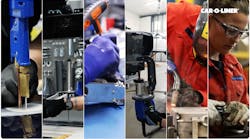The AlixPartners study shows that after weathering an unprecedented global volume decline of 29% in 2009, North American OEMs are recovering and production is expected to return to strong 2008 levels in the next two to three years. Despite the recovery and expected growth, however, North American OEMs are being outflanked both by emerging-market-based OEMs, which now account for two-thirds of global commercial-truck production, and by European competitors, who have gained first-mover advantage vis-à-vis partnerships with low-cost indigenous companies.
Moreover, producers in China, India and Russia together are expected to boost their output by some 50% over the next four years, says the study, due to the strength of domestic economies and demand from other emerging markets in Southeast Asia, Africa, the Middle East and Central America.
According to AlixPartners, North American OEMs are not well positioned to exploit this increasing demand in emerging markets because of a mismatch of product types, a lack of local partners and, especially, too-high costs. In fact, the study finds, even with a growing demand for a so-called 'middle segment' of more sophisticated trucks on the horizon in BRIC and other emerging markets, the cost of these vehicles is still 40% to 50% less than the average North American-made truck.
"The key for North American OEMs is to focus on how to quickly gain a foothold in the middle segment, said Francesco Barosi, a managing director at AlixPartners and head of the firm's Commercial Vehicle Practice. "However, that's all the more difficult today because there are now only a few "unmarried" joint-venture partners left in China, India and Russia to aid in lowering costs. That means OEMs, and their suppliers, must focus like never before on whatever is necessary to customize low-cost products for emerging markets. The alternative is to cede half of the global market and, thereby, perhaps a company's long-term future."
According to AlixPartners, the current predicament of North American OEMs and the growth prospects for the commercial vehicle market globally put immediate pressure on companies to engage in 'value engineering,' a systematic method to improve the value of products by a close examination of function, on a global level.
"North American companies must invest in producing simpler designs for commercial vehicle components so that they can generate the significant cost improvements up to 50% necessary to compete in the future," said Tai Li, a director in AlixPartners' Commercial Vehicle Practice. "Furthermore, in order to penetrate emerging markets, a key priority for suppliers as well as OEMs should be to invest in developing low-cost products better customized to the needs of these markets."
The study also found that China's commercial vehicle production volume increased by 22% in 2009, while volume globally decreased by 29%. Today, China accounts for 49% of total BRIC (Brazil, Russia, India, China) commercial vehicle production, which in turn accounts for 66% of global production.
As part of the expected Western OEM recovery, North American Class-8 truck production is expected to increase by 25% in 2010 to 150,000 units. By 2014, the global commercial vehicle industry is expected to grow by 1.8 million units, with China expected to account for 36% of total global growth.

